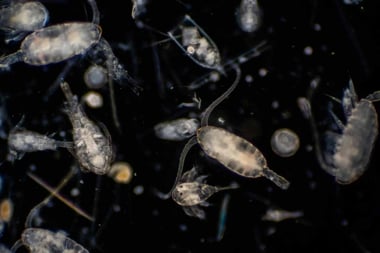Genetically Engineered Wheat: A Grainy Problem
Need three more reasons to go to alive.com ("Lobbying Letters") and print out your letter opposing the commercialization of genetically engineered wheat in Canada?
- "Canada is seen as ideal for producing organic food because of its large and varied land base and cooler climate, which helps reduce pest and disease problems. Organic grain production is the fastest growing sector, and also represents Canada's largest organic export commodity."-The World of Organic Agriculture 2003: Statistics and Future Prospects.
- Biotech wheat may cut US exports in half. If Monsanto is successful in commercially introducing "Roundup Ready" wheat-the first ever-there is "high risk" that the US wheat industry will lose 30 to 50 per cent of its business with foreign markets. This study was conducted by Robert Wisner, released Mar. 11, 2003, and financed by the Western Organization of Resource Councils, a US-based coalition of community groups. Although it examines the American market, the news doesn't suggest good news for Canadian prospects.
- Manitoba's first organic grain elevator is up and running! Located in Arden, east of Neepawa, the elevator takes 22 certified organic crops. "People are more and more concerned about what they're putting into their bodies, as well as what's happening in the environment, to the water supply, and that's certainly driving the organic movement forward," said Tracey Wintrop-Meyers, product manager for the Canadian Organic Commodity Marketing Company.
Safer Playgrounds, Please!
Have you heard about a hidden danger lurking on our playgrounds? Wooden structures are treated with chromated copper arsenate (CCA), which gives the wood its greenish tinge. Now Environmental Defence Canada has released a report examining 58 playgrounds in Toronto, Montreal, Halifax, Edmonton, Vancouver, Winnipeg and Ottawa. The group found that 60 per cent had arsenic levels above federal safety guidelines of 12 parts per million. The highest result, found in Thorncrest Parkette in Etobicoke, Ont., was more than 12 times higher than the federal guidelines. Toronto Parks and Recreation has questioned the accuracy of the study results. Nevertheless, the question remains: what about other Canadian playgrounds? Almost all playground equipment is treated with CCA.
Arsenic leeches into soil and sand, and kids can get arsenic residues on their hands and skin-and from there into their mouths. According to new data from the US Consumer Product Safety Commission, for every one million children exposed three times a week to affected playgrounds, two to 100 may develop lung or bladder cancer later in life due to that exposure. Visit edcanada.org, beyondpesticides.org and ewg.org for more info on how to get involved.
A Whole Wide World of Organics
22 million: number of organic hectares worldwide
10.5 million: organic hectares in Australia
3.2 million: organic hectares in Argentina
1.2 million: organic hectares in Italy
950,000: organic hectares in the United States
430,600: organic hectares in Canada
3,200: number of certified organic farms in Canada
$460 to $660 million US: estimated worth of Canada's current organic industry
$2 billion US: estimated worth of Canada's organic industry by 2005.
The World of Organic Agriculture 2003: Statistics and Future Prospects, a 130-page report downloadable at ifoam.org.




